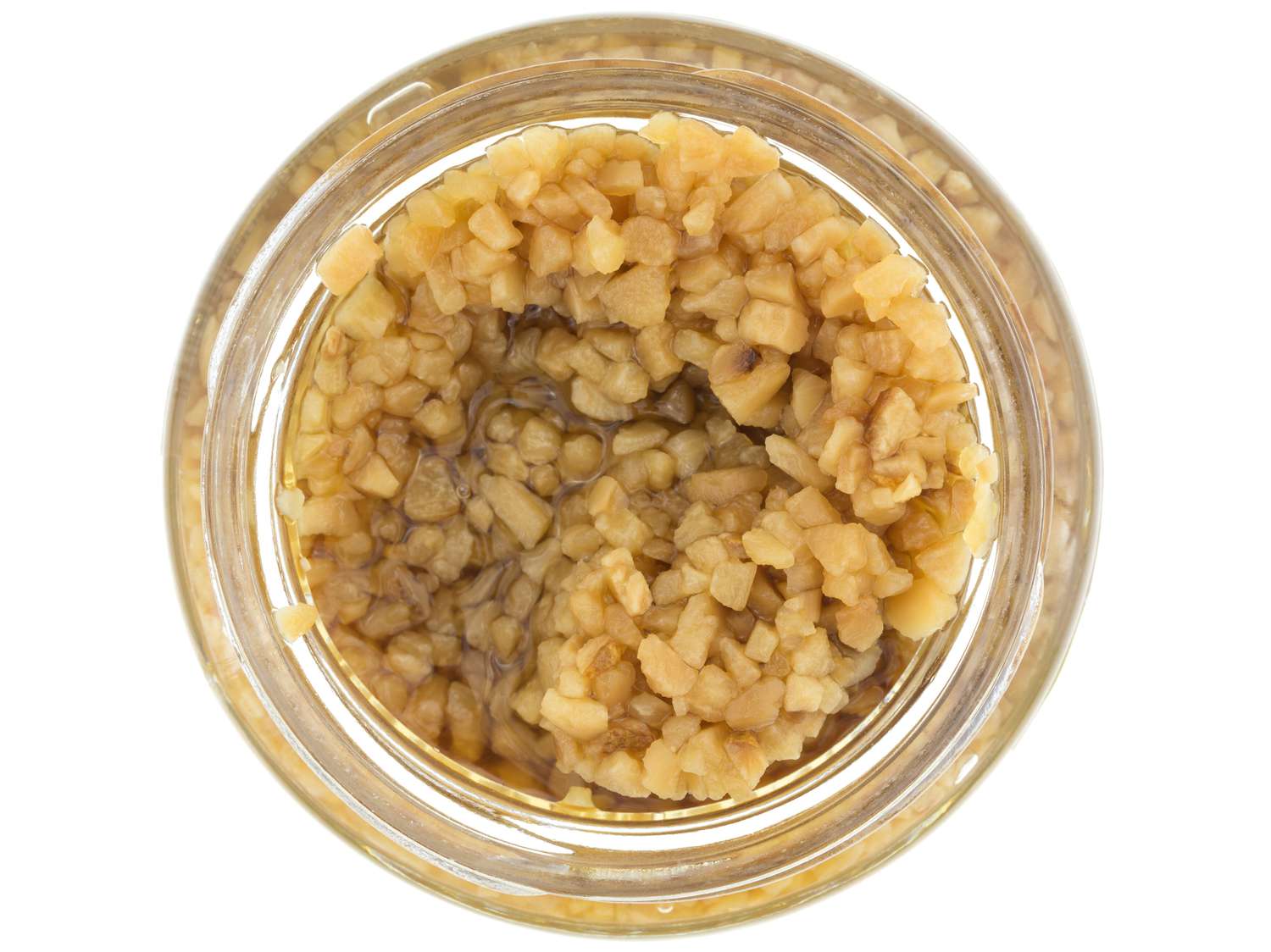Close


Photo:
Getty Images
I hadn’t really given much thought to pre-minced garlic until my chef husband picked up a jar while we were traveling last year. He was so casual about it, it almost shocked me. We’re not snobby by any means—well, maybe a little—but his nonchalance genuinely threw me for a loop. To my utter dismay, one jar turned into two, and before I knew it, “jarlic” became a refrigerator staple in my house.
It’s hard to argue with the ease of just scooping out a teaspoon of perfectly minced garlic instead of peeling/smashing/pressing/a clove at a time. My skepticism and curiosity led me to scoop jarred garlic into stir-frys, casseroles, salad dressings, marinades, soups, and more. And I have news: While jarlic is immensely convenient, there are applications and recipes that really do necessitate fresh cloves. Here’s what I learned.
What Is Jarred Garlic?


Spice World
Jarred garlic is more than just garlic. During the jarring process, garlic is minced, pasteurized and submerged in a light pickling liquid composed of oil, water, salt, sugar, and citric acid. The additional ingredients are meant to preserve the product along with its flavor and texture. However, the garlic within tends to be less flavorful, less potent, and loses its antibacterial properties due to pasteurization. Jarred garlic tastes and smells different from a freshly minced clove and therefore behaves differently during the cooking process.
Further, the longer a jar of minced garlic hangs out in your fridge, the larger the ratio of liquid to garlic within the jar grows, further altering its flavor and potency. After multiple tests, I began to notice an almost smoky, burnt taste that followed not all, but some items that had jarlic in them. This is due to a handful of factors: the product itself, the age of the jar, and the recipe in question. My experiments led me to the following conclusions:
Best Applications for Jarred Garlic
- Tomato-based sauces and soups: Tomatoes and tomato products have enough acidity to offset the sometimes bitter flavor of jarlic.
- Flavorful stir-fries: Stir-fry recipes are a great way to use jarlic, especially if you are using a soy-based sauce, which will mask any funkiness.
- Sour-cream-based dips and sauces: Sour cream has both richness and acidity that will balance the flavor of jarred garlic.
- Marinades: Most marinades contain enough acid to balance the flavor of jarred garlic, and the product will typically absorb enough of its surrounding flavors to be fairly neutralized.
- Stews or Chillies: Jarlic is a fine substitute for fresh in heavier dishes like these, especially when beans and/or meat are present.
When to Reach for Fresh Garlic


- Delicate salad dressings: Even the heaviest of hands with vinegar and citrus cannot mask the flavor of jarred garlic in a simple salad dressing. Mince or smash a fresh clove for these recipes.
- Broth or roux-based soups: I learned this first hand when I added jarred garlic instead of fresh to my favorite chicken soup recipe. When you are building a flavor profile from the bottom-up, reach for fresh garlic. Otherwise, the entire dish will be a little off.
- Medicinal Tinctures: When I feel a cold coming on, I mince fresh garlic with lemon, honey and Sriracha and drink it like some kind of deranged bar shot. I swear by this and rarely ever get sick. However, due to its pasteurization, jarred garlic will not do the trick because it lacks the antibacterial properties of fresh garlic.
- Garlic-specific dishes: If a dish has “garlic” in the name—garlic bread, garlic sauce, etc.—always use fresh garlic. These dishes are designed to celebrate the pure, unadulterated flavor of fresh garlic.
While I can officially declare myself to be a jarlic convert, you better believe I still keep my fresh cloves around for garlic-related emergencies.
Related: Yes, It’s Better to Shred Your Own Cheese—Here’s Why
Was this page helpful?
Thanks for your feedback!
Tell us why!
Other
Submit





